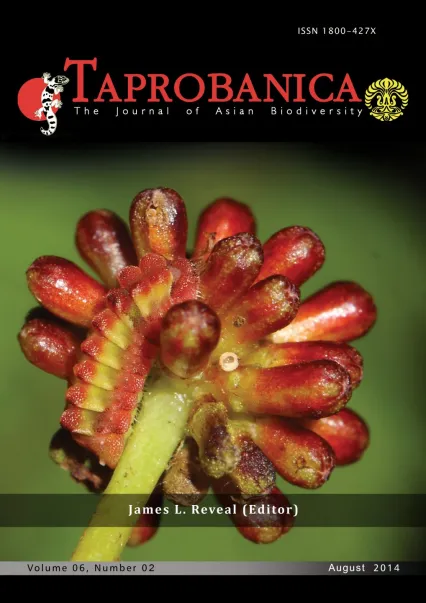

v6i2.142
Volume 6 | Number 2 | November 2014
Major Article
ISSN: 1800-427X (print)
eISSN: 1800-427X (online)
DOI:10.47605/tapro.v6i2.142
Submitted date: 9 April 2013
Accepted date: 1 May 2014
Published date: 30 August 2014
Pp. 100–109, pls. 9–11.
POLLINATION ECOLOGY OF Lumnitzera racemosa WILLD. (COMBRETACEAE), A NON-VIVIPAROUS MANGROVE TREE
A.J. Solomon Raju*, Rajendra Kumar & B. Rajesh
*Corresponding author. E-mail: ajsraju@yahoo.com
Abstract
Lumnitzera racemosa is a non-viviparous evergreen mangrove tree species. It is a massive bloomer from mid-July to mid-August. The flowers are bisexual, self-compatible, self-pollinating and exhibit a mixed breeding system. The plant is temporally dioecious with marked protandry and a non-receptive stigma on day one of anthesis with a receptive stigma on days two and three. Fruit set is approximately 90% due to self and cross-pollination. The floral characters are related to pollination by generalized flower-visiting insects, notably actinomorphy, white spreading petals, limited but easily accessible nectar, and position of stamens. Pollinators include bees, wasps and butterflies. Fruits are invariably 1-seeded despite the presence of 3–5 ovules. Natural regeneration is low perhaps due to abortion of embryos or the feeding of embryos by small grubs. Fallen mature fruits become fibrous in water and this may aid dispersal in the sea. However, fruit germination and seedling establishment is curtailed due to their salinity-sensitivity.
Key words : floral sexual functions, fruit set, germination, mixed breeding system, seedling
Section Editor: James L. Reveal
eISSN: 1800-427X (online)
DOI:10.47605/tapro.v6i2.142
Submitted date: 9 April 2013
Accepted date: 1 May 2014
Published date: 30 August 2014
Pp. 100–109, pls. 9–11.
POLLINATION ECOLOGY OF Lumnitzera racemosa WILLD. (COMBRETACEAE), A NON-VIVIPAROUS MANGROVE TREE
A.J. Solomon Raju*, Rajendra Kumar & B. Rajesh
*Corresponding author. E-mail: ajsraju@yahoo.com
Abstract
Lumnitzera racemosa is a non-viviparous evergreen mangrove tree species. It is a massive bloomer from mid-July to mid-August. The flowers are bisexual, self-compatible, self-pollinating and exhibit a mixed breeding system. The plant is temporally dioecious with marked protandry and a non-receptive stigma on day one of anthesis with a receptive stigma on days two and three. Fruit set is approximately 90% due to self and cross-pollination. The floral characters are related to pollination by generalized flower-visiting insects, notably actinomorphy, white spreading petals, limited but easily accessible nectar, and position of stamens. Pollinators include bees, wasps and butterflies. Fruits are invariably 1-seeded despite the presence of 3–5 ovules. Natural regeneration is low perhaps due to abortion of embryos or the feeding of embryos by small grubs. Fallen mature fruits become fibrous in water and this may aid dispersal in the sea. However, fruit germination and seedling establishment is curtailed due to their salinity-sensitivity.
Key words : floral sexual functions, fruit set, germination, mixed breeding system, seedling
Section Editor: James L. Reveal
- List of Articles & Contents





